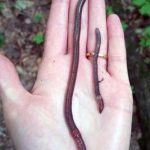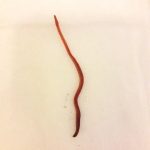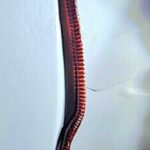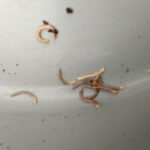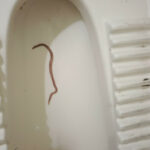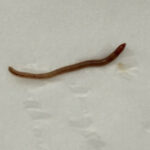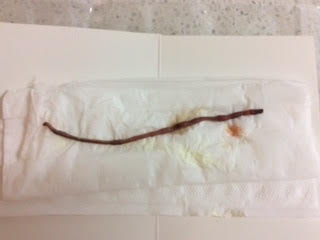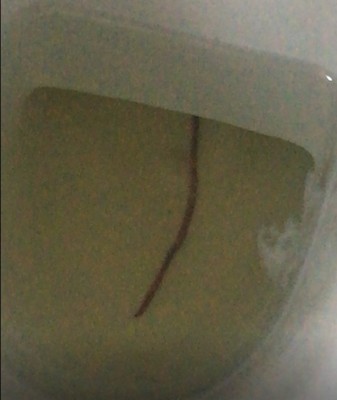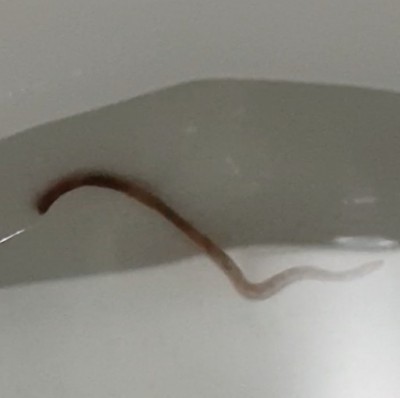
This frighteningly long worm was found by this woman who wonders if we could help identify it. The worm in question appears to be wrapped around some sort of concrete post, and sports a glossy, black body with darker stripes at regular intervals, with a reddish head at the end visible in the photograph.
We wish to thank our reader for the excellent photograph provided, as it definitely helps us identify its individual characteristics to narrow down the potential suspects. Regardless, this one proved to be quite the head-scratcher. In a second image provided by our reader, we get a clear size-comparison between the worm and the stalk of a plant, which tells us that the worm could be somewhere between 3-4-inches. Additionally, the uniform smoothness to its body and lack of defined segmentation rules it out as a millipede, which would have been our first guess, seeing as the worm does not appear to be contracting its body to crawl up the length of the white-pillar.
Thus, despite the worm not appearing to be contracting its body in the photograph, our best bet is that this worm is an earthworm. This suggestion might seem baffling, as what is likely going through our readers’ heads when we say ‘earthworm’ probably does not match the worm in the picture at all, but there are actually far more species of earthworm than the common one we find in our backyards. The species that this worm resembles in particular is the pheretima.
Like most earthworms, pheretima earthworms are burrowers, meaning that they live underground in the soils, specifically in rich, moist soils where the worms will have plenty of decaying organic matter to feed on. Pheretima are nocturnal, which explains why our reader seemingly took this photograph at night, as this is the time when they leave their underground burrows to seek out mates, food, and potentially new habitats. They tend to be dark brown in color (which this worm might be, though it can be difficult to tell in certain lighting, and especially in flash photography), and the darker stripes/segments are markers of dorsal blood vessels. Upon zooming in on the photographs, one can also make out a clitellum, a distinctive feature of the earthworm which is the thicker band of skin that tends to wrap around the worm halfway up its body.
That being said, what makes us unsure as to whether or not this worm really is a pheretima earthworm is its size. Pheretima earthworms, though being larger than the common earthworm, tend to grow up to 15cm (approximately 6-inches), which is quite long considering the supposed size of the creature in the photograph our reader sent in. Yet, then again, we do not know how close up of a photo this is, and our reader did not give any opinions or insights into the length of the worm.
To conclude, although we are not completely confident in our identification of this worm, we would suppose that the creature found by our reader was a pheretima earthworm. These creatures are harmless, and are beneficial for the environment, so we advise simply leaving them alone. If any of our reads have any other suggestions as to what this worm might be, feel free to leave them in the comments below.
All About Worms is always free, always reader-supported. Your tips via CashApp, Venmo, or Paypal are appreciated! Receipts will come from ISIPP Publishing.
You might also find these guys interesting!






